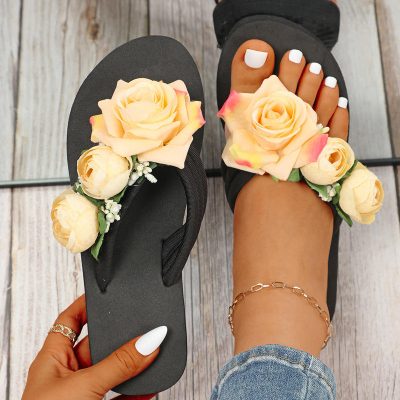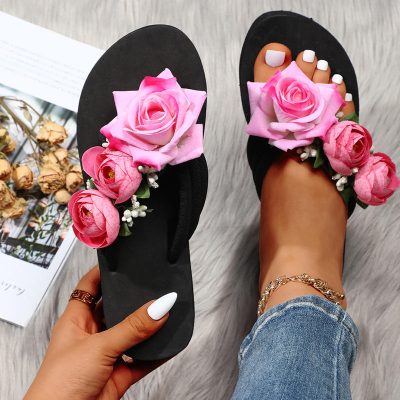Introduction: Women’s flip flops have come a long way from their humble beginnings as simple beachwear to becoming a ubiquitous fashion staple embraced by people of all ages and lifestyles. This iconic footwear has evolved over the years, transcending its functional origins to become a symbol of casual elegance and laid-back style. In this article, we’ll take a journey through the history of women’s flip flops, exploring their cultural significance, design evolution, and enduring popularity in the world of fashion.
- Origins in Ancient Cultures: The origins of flip flops can be traced back thousands of years to ancient civilizations such as Egypt, where they were crafted from papyrus leaves or palm fronds. Similar designs were also found in ancient Rome, Japan, and other cultures, where flip flops were worn for their simplicity and breathability in hot climates.
- Rise in Popularity in the 20th Century: Women’s flip flops gained popularity in the 20th century with the advent of mass production and the rise of beach culture. During the post-World War II era, flip flops became synonymous with leisure and relaxation, symbolizing the carefree spirit of summer vacations and beach holidays.
- Transition to Fashion Statement: In the 1960s and 1970s, women’s flip flops underwent a transformation from functional beachwear to fashionable footwear. With the rise of surf culture and the hippie movement, flip flops became a symbol of counterculture rebellion and bohemian style. Designers began experimenting with new materials and embellishments, adding colorful straps, metallic accents, and platform soles to elevate the humble flip flop to a fashion statement.
- Enduring Popularity in the 21st Century: In the 21st century, women’s flip flops have become a wardrobe staple embraced by people of all ages and demographics. From casual beach outings to city streets and red carpet events, flip flops are worn in a variety of settings, reflecting their versatility and timeless appeal. Designers continue to innovate with new materials, technologies, and styles, ensuring that flip flops remain relevant and fashionable in the ever-changing world of fashion.
- Cultural Significance: Beyond their fashion appeal, women’s flip flops hold cultural significance in many parts of the world. In countries such as Brazil, Japan, and Australia, flip flops are deeply ingrained in the local culture and are worn as everyday footwear by people of all ages. In Hawaii, the term “slippah” is used to refer to flip flops, reflecting their cultural importance in the island’s laid-back lifestyle.
Conclusion: Women’s flip flops have evolved from simple beachwear to iconic fashion staples embraced by people around the world. With their rich history, cultural significance, and enduring popularity, flip flops continue to be cherished for their comfort, versatility, and effortless style. Whether worn on sandy shores or city streets, flip flops embody the spirit of summer and the timeless allure of casual elegance.








